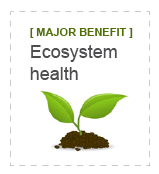Minimize the volume of and pollutants in rainwater runoff by maximizing green infrastructure.
Best Practice
Best Practice Actions
a. A narrower streets provision that permits construction of 24-foot roads for public, residential access and subcollector streets (with fewer than 400 average daily trips).
b. Use of pervious pavements for streets, trails, parking areas and sidewalks.
c. For sites less than one acre, retain the water quality volume of 1.1 inches of runoff from all impervious surfaces for new and fully-redeveloped construction sites.
d. For non-MS4 permittees, adopt an illicit discharge prohibition rule or ordinance and an erosion and sediment control ordinance. Sponsor a robust Adopt-a-Drain program
a. Rain gardens/infiltration practices.
b. Rainwater harvesting practices.
c. Green alleys or green parking lots.
d. Pervious/permeable pavement or pavers.
e. Green roofs / green walls.
f. Tree trenches / tree boxes.
g. Incorporate compost and/or native plants into landscape design.

